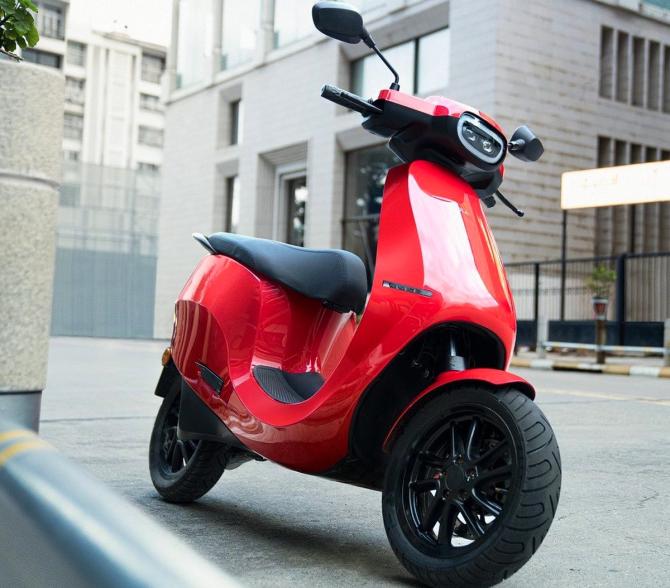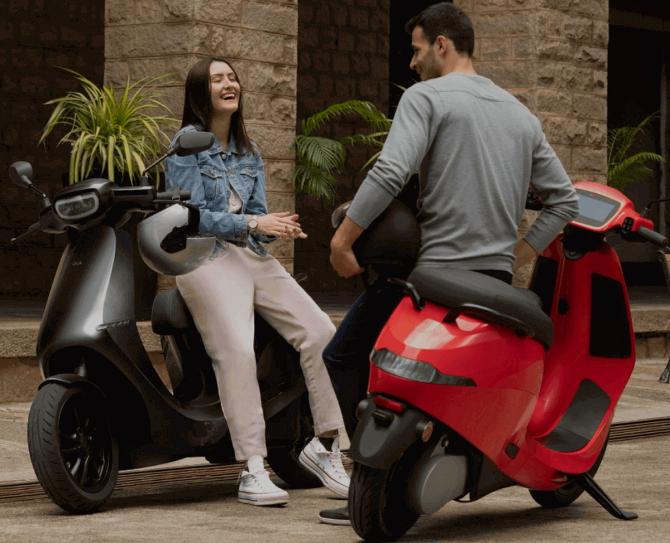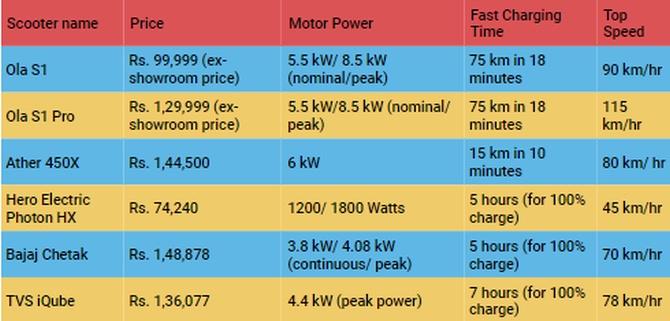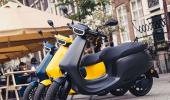It takes a while to get used to the constant and instant supply of power that is the case with EVs, and handling the S1 Pro when it takes a corner or makes a turn can be tricky, says Pavan Lall.

In the last year, Ola Electric has played a role in making the electric scooter the most talked about product in India's high-volume two-wheeler market.
There are at least two reasons for the focus on e-scooters.
One is the huge attention resulting from the ESG (environment, sustainability and governance) norms, which are focusing on the environment and emissions.
The second is Ola's enormous ambitions, which border on the audacious given its claims it will have a capacity of 10 million units.
Who doesn't relate to the scooter? From the Bajaj Chetak of yesteryear to the modern Vespa that's commonly used in Europe, the scooter has historically been a cheap and practical vehicle but one been driven by fossil fuels.
With an electric battery, there's an element of future-readiness and environmental responsibility but one must bear in mind that electricity in India is largely thermal or coal-generated so the root of power will not be entirely emission-free.

The version I drove (S1 Pro) was smartly designed and with body styling and accents that make it gender- and age-agnostic.
Equipped with large, wide tyres and wearing a bright orange-red colour that can be likened to vermilion or a Mumbai sunset, the scooter was heavier than I expected but comfortable to get on to and easy enough to balance even for an amateur. No kick-starts or pushing a pedal.
Like all electric, and now even ICE vehicles, this scooter comes to life with the push of a button -- and the simultaneous squeeze of the brake handle.
Riders can pick one of three drive options that make it perform exactly as described: normal, sport and hyper.
A word of advice -- keep your head down, and hold on tight when in hyper mode, which threatens to catapult both the rider and the scooter five feet ahead of where it ought to be.
It takes a while to get used to the constant and instant supply of power that is the case with EVs, and handling the S1 Pro when it takes a corner or makes a turn can be tricky.
One must practise deceleration before deploying brakes and not after or during, because unlike in an ICE engine -- where torque and power don't reduce gradually -- the transition is instant in the Ola Electric.
What that means is that when you take your hand off the acceleration handle, the scooter won't immediately slow down -- requiring the rider to push the brakes to make that happen.

Once you get used to that, it is a smooth ride with a loud horn and an operating system, which is driven by software that lets you switch the scooter on and off.
The battery that is located under the footrest and sits below the chassis is protected by a plate and also serves to reduce the scooter's centre of gravity, thereby giving it more stability.
Most riders do use gloves for safety and I found that with gloves on, getting panel buttons to respond as easily as they were designed to gets tricky.
One wants to lose the gloves after struggling a few times.
Can the battery be removed to recharge or be replaced by the customer? Ola says it can be bought by the dealer or the company but not the customer.
In addition, the S1 Pro comes with one charger, which is great, but customers would likely want two -- one for their home and maybe another for their office.
The scooter comes in two variants -- a regular S1 and the S1 Pro.
The difference is minimal and includes range (181 km in Pro as opposed to 121 km in S1), acceleration (3.6 seconds for 0-40 km/hr and 7 seconds for 0-60 km/hr in S1; and 3 seconds and 5 seconds, respectively, in Pro), capacity (2.98 kWh in S1 and 3.97 in Pro) and charging time (four hours and 48 minutes in S1, six hours and 30 minutes in Pro).

The more advanced version also gets higher-end features to include hill hold, cruise control and voice assistant.
It comes in ten vibrant colours including yellow and red.
Ola's marketing executives say the colours are designed for younger buyers and that even though takers have largely booked black-and-white options, most shades are finding bookings.
If there's a concern, it is that these vehicles are priced too high.
Even though it's cheaper than the Ather, with an average sticker price of around Rs 1 lakh, the Ola electric scooter would still be much more expensive than, say, a Hero Super Splendor motorcycle that costs about Rs 74,000.
Albeit not an apple to apple comparison, it is important because consumers might weigh both options.
Ola will no doubt see a ton of competition from other electric scooters that include Ather 450X, Hero Electric, Bajaj Chetak and TVS iQube.
And while that may be great for the customer, it could potentially lead to a paradigm shift for all and not the least makers of the two-wheeler.
Let the charging begin.
Feature Presentation: Rajesh Alva/Rediff.com










